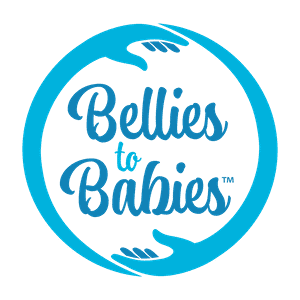Healing from PTSD: Tools, Treatments, and Hope for Recovery
Welcoming a baby into your life is usually thought of as a happy and exciting event. But for some of us, the experience of giving birth and becoming a parent can be frightening, disorienting, and even traumatising. There are few official figures for how many women suffer from postnatal PTSD, and because of the continued lack of recognition of the condition, it is difficult to say how common it really is. Some studies that have attempted to quantify the problem estimate that 4% of births lead to PTSD. One study from 2003 found that around a third of mothers who experience a “traumatic delivery”, defined as involving complications, the use of instruments to assist delivery or near death, go on to develop PTSD.
With 130 million babies born around the world every year, that means that a staggering number of women may be trying to cope with the disorder with little or no recognition. And postnatal PTSD might not only be a problem for mothers. Some research has found evidence that partners can suffer it too after witnessing their partner go through a traumatic birth.
Despite these potentially debilitating effects, postnatal PTSD was only formally recognised in the 1990s when the American Psychiatry Association changed its description of what constitutes a traumatic event. The association originally considered PTSD to be “something outside the range of usual human experience”, but then changed the definition to include an event where a person “witnessed or confronted serious physical threat or injury to themselves or others and in which the person responded with feelings of fear, helplessness or horror”.
Pregnancy, birth, and the postnatal period are all intense, transformative times of life. They are also marked by significant physical, hormonal, and emotional changes. Most of us have heard of postnatal depression (PND), but what you may not know is that PND isn’t the only possible mood disorder experienced by new parents after having a baby.
Causes and symptoms of postnatal PTSD
Everyone experiences PTSD differently, but it is usually characterised by feelings of hypervigilance, fear, and intrusive thoughts.
Your feelings of panic may be elicited by thinking about something frightening that happened during your labour and/or birth, such as being rushed to the operating room for a C-section. Your emotions may be easily triggered when someone mentions something related to your birth or anything traumatic that happened to you during birth or the postnatal period.
Traumatic events that may cause postnatal PTSD include:
difficult labour with a long and painful delivery
an unplanned caesarean section
emergency treatment
other shocking, unexpected and traumatic experiences during birth
Some people feel that having a new baby makes up for any traumatic experiences. Or they may think that enjoying being a new parent means they will soon forget about trauma. But these traumatic experiences may have a negative effect on your relationship with your partner, baby and the people around you.
You may feel disappointed that your birth was not the experience you were hoping for. Or you might feel angry with the medical staff if you felt that the delivery wasn't handled well.
Your experiences may also make you feel anxious about having another baby in future, in case you have to go through a similar experience during birth.
Symptoms of PTSD include:
Avoidance of any reminders of the traumatising events
Avoidance of people or institutions associated with the traumatising event, such as doctors or hospitals
Sleep disturbances and frequent nightmares
Flashbacks to the traumatic event
Intrusive thoughts/images related to the trauma
Being easily startled
A general feeling that you or your baby are in danger
Frequent panic attacks
Feeling easily irritated or aggravated
Feeling detached from others
Wanting to withdraw from relationships
Blaming yourself for the traumatic event
It may also include:
vivid flashbacks (feeling that the trauma is happening right now)
intrusive thoughts and images
nightmares
intense distress at real or symbolic reminders of the trauma
physical sensations such as pain, sweating, nausea or trembling.
Alertness or feeling on edge:
This may include:
panicking when reminded of the trauma
being easily upset or angry
extreme alertness, known as 'hypervigilance'
finding it hard to sleep, even when you have the chance
irritability or aggressive behaviour
finding it hard to concentrate, including on simple or everyday tasks
being jumpy or easily startled
self-destructive or reckless behaviour
other symptoms of anxiety
Living with PTSD can feel overwhelming, but it’s important to remember that help is available, and healing is possible. Whether through therapy, support groups, medication, or self-care strategies, there are many paths to recovery.
Seeking help is a courageous step that can lead to a life filled with greater understanding, connection, and hope. If you or someone you know is struggling with PTSD, reaching out to a trusted healthcare professional or a support network can be the first step toward reclaiming control and finding peace.
Medical disclaimer: This page is for educational and informational purposes only and may not be construed as medical advice. The information is not intended to replace medical advice offered by physicians, osteopath, midwife, obstetrician, chiropractor or other qualified health care provider.

